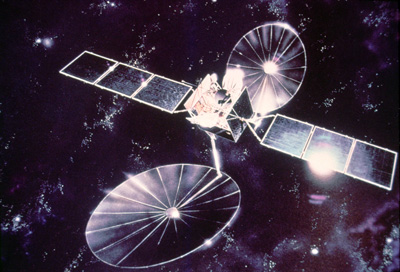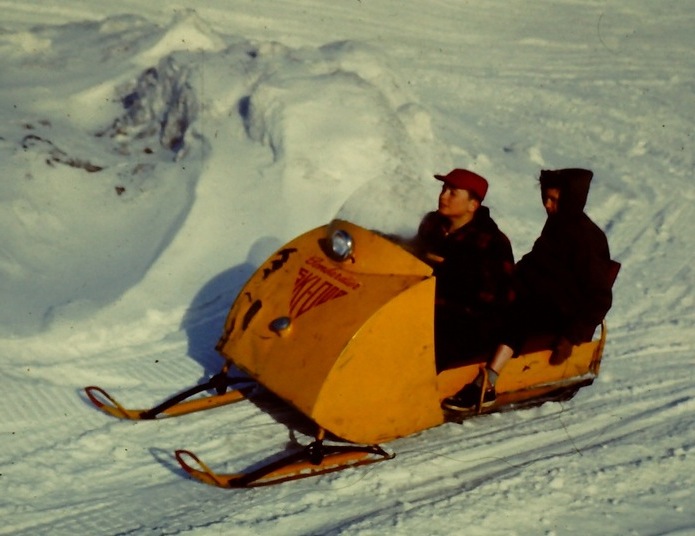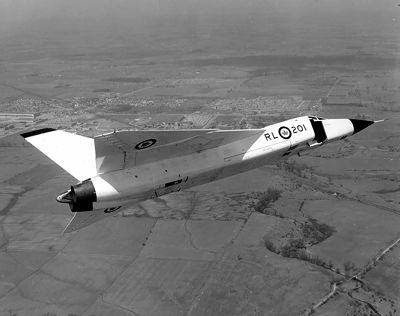The aerospace industry includes the development and production of aircraft, satellites, rockets and their component parts. Aerospace is a major component of Canada’s economy, employs tens of thousands of Canadians, and accounts for a large part of Canadian trade with foreign markets. Canada boasts a diverse aerospace sector and is one of just a few countries that produce airplanes. Through close partnership with the United States space agency, the National Aeronautics and Space Administration (NASA), Canada has also launched satellites as well as built sophisticated components used on the International Space Station.

Canada’s Aeronautical Industry Pre-1945
Between the early 1900s and 1945, the aeronautics industry grew from a small niche of enterprising inventors, test pilots, and small garage-based factories into a mature, vital economic sector. Large companies in North America and Europe designed and built ever-improving aircraft models to serve the growing passenger market and military demands. Canada had a large and highly educated workforce by the time the Second World War increased the demand for aircraft production. It produced thousands of planes for the war effort from factories across the country, with the main centre of production based in the Montreal area.
Canadair
Canada’s first aeronautical companies were small in comparison to today’s, and many were subsidiaries of foreign firms. For example, Canadair, the country’s first major aeronautics company, was originally incorporated in 1911 as a Canadian branch of the British company Vickers Limited. In its early years, the company designed and manufactured a series of airplanes, starting with the Vedette. The Vedette was Canada’s first “flying boat,” meaning it took off and landed on water instead of land. During the Second World War, the company was relocated from East Montreal to the Cartierville airport in the Montréal suburb of Saint-Laurent, purchased by the federal government, and renamed Canadair. Canadair played an important wartime role in its production of the Canso amphibian — a military aircraft that can set down on land or water.
de Havilland Like Canadair, Toronto-based de Havilland was founded as a subsidiary of de Havilland Aircraft Company of England in 1928. During the Second World War, de Havilland produced the multi-purpose Mosquito and training airplane Tiger Moth.
Pratt & Whitney CanadaSome early Canadian aeronautics companies specialized in aircraft engines and components rather than entire planes, including Pratt & Whitney Canada Ltd. (PWC), a subsidiary of the American company Pratt & Whitney. Pratt & Whitney established its Canadian subsidiary in 1928 as a parts and overhaul facility for Wasp engines, a type of engine used in several aircraft during the 1920s. During the Second World War the business grew, owing to the substantial use of Pratt & Whitney engines by the military.
Turbo Research Ltd.Until the Second World War, Canadian aeronautical factories and industries had turned out planes or parts designed abroad. That changed in 1944 when the National Research Council of Canada (NRC) established Turbo Research Ltd. in the Toronto suburb of Leaside. A specification for a turbojet was drawn up and design of the TR-4 engine (Chinook) began.
The demands put on Canadian subsidiaries during the Second World War gave them the experience and resources needed to make the jump to become larger and more independent, and kept Canada at the forefront of aeronautical achievement for the years that followed the war’s end.
Canada’s Aeronautics Industry 1945–1980
Following the end of the Second World War, Canadian aeronautical industries expanded both in military and civilian aircraft production. New companies were formed out of existing industries to meet the needs of the growing Canadian economy and the nation’s military.
Avro Canada
In 1945, Avro Canada was formed to provide a domestic aircraft- and engine-design and manufacturing capability, particularly for defence. The new company took over the assets of Victory Aircraft Ltd., in Malton, Ontario, which had produced Lancaster bombers during the Second World War. In the summer of 1946, the Royal Canadian Air Force (RCAF) requested the design and development of a twin-engine, two-seater, all-weather fighter jet, the CF-100 Canuck. To power the jet, Avro Canada decided to build its own engine, called the Orenda. By 1951, a new manufacturing plant was constructed, opening in 1952. Within 17 months 1,000 Orendas had been delivered to the RCAF.
The Avro Arrow
In 1953, Avro Canada began development of a supersonic engine, later called the Iroquois. This engine was chosen to power the Avro Arrow (CF-105) supersonic fighter, designed to intercept long-range bombers carrying nuclear weapons. On 20 February 1959, the government cancelled the aircraft and engine programs out of concern that the plane was too expensive. Further concerns that the Arrow was growing irrelevant in light of the new threat posed by nuclear missiles, which superseded the bombers the Arrow was designed to fight, led the government to seek American Bomarc missiles instead of the Arrow (see Bomarc Missile Crisis). The termination of the Arrow was a watershed moment in the history of the Canadian aerospace industry, marking the end of Canada’s effort to independently make aerospace weapons. Over one weekend the work force at Avro Canada shrank from 5,000 to 1,000, with a total of 14,000 workers losing employment throughout the industry.
de Havilland
Following the cancellation of the Arrow, the Malton aircraft facilities of Avro Canada continued under de Havilland direction until 1963, when the Douglas Aircraft Company assumed ownership to produce wings and tail parts for its DC-9 commercial jet. Later the Douglas parent company was taken over by the McDonnell (US) Company and the Malton facility became McDonnell Douglas Canada Ltd. The Canadian entity developed into an important manufacturer of wings for several large commercial and military support jets. McDonnell Douglas Canada's parent corporation merged with American aircraft manufacturer Boeing in August 1997.
De Havilland Canada also remained prominent in the postwar era. Its first design venture as a solely Canadian company was the Chipmunk trainer built in 1946, followed in 1947 by the famous de Havilland Beaver, the first in a sequence of short-takeoff-and-landing (STOL) aircraft: the de Havilland Otter, Caribou, Buffalo, Twin Otter and Dash 7. The Beaver was particularly notable for its use in bush flying, where it could land on small lakes and rivers (and even on snow) in remote locations across Canada’s northern reaches. Nearly 1,700 Beavers were built between 1947 and 1967, which to this day is more than any other Canadian-built plane. Building on this heritage, de Havilland later produced several models of the Dash 8, a market leader in turbo-propeller-powered commuter aircraft.
In 1974, the federal government purchased de Havilland to secure the development and production of the Dash 7 and the continued operation of the company as an aircraft manufacturer in Canada. In 1986, de Havilland was sold to Boeing, and in 1992, to Bombardier. Longview Aviation Capital of British Columbia bought the rights to the de Havilland name and trademark from Bombardier in 2018.
Canadair
Canadair had a similar experience to de Havilland Canada during the postwar years. In 1947, the government sold Canadair to the American firm Electric Boat Company, bought it back in 1976 and then sold it to Bombardier in 1986. While it did not spend much time as an independent entity, it managed to produce some high-quality aircraft. Of note was the North Star, a Canadian-built variant of the Douglas DC-4. The North Star was used from 1946 until 1966 by the RCAF, as well as airlines in North America and Europe, offering good performance and safety while carrying dozens of passengers on long-haul routes. Canadair was also an important producer of executive jet aircraft such as the Challenger series and the Regional Jet, the latter of which continues to be used by airlines around the world for short- and medium-range commercial passenger service.
Pratt & Whitney Canada
Pratt & Whitney Canada (PWC) remained at the forefront of aircraft engine development during the postwar era as well. Prompted by studies that indicated the piston-engine business would decline during the mid-1950s, it decided to organize a team to design and develop gas turbines for general aviation. An engine for a turbo-propeller plane, designated the PT6, was developed. The engine is pre-eminent in its class and is still used in planes flown in over 180 countries. PWC currently manufactures the PW100 and PW150 series of engines that power many of the world’s regional commuter airliners. It also develops new generations of engines for helicopters and small executive jets.
Canada’s Modern Aerospace Industry
Hundreds of companies in Canada are involved in the aerospace sector. The industry has a presence in every region of the country, with main production centres in Montreal and Toronto. In 2018, more than 213,000 people worked in designing, building, maintaining and supporting the industry, which contributed over $25 billion to the Canadian economy.
Bombardier

Bombardier Inc. is Canada’s principal aircraft manufacturer. It was once a global competitor in the commercial airliner business, producing jets such as the C Series. However, to recover from financial troubles that followed the company’s rapid expansion in the late 20th century, Bombardier sold off significant parts of its business. It has emerged from years of downsizing in the 21st century with an exclusive focus on manufacturing private business jets.
For decades, Bombardier’s aerospace operations included two long-standing players in the industry: Canadair, which it purchased in 1986 and sold to Mitsubishi in 2019, and de Havilland Canada, which it purchased in 1992 and sold to Longview Aviation Capital (parent company of Viking Air) in 2018. It also acquired Short Brothers in Northern Ireland in 1989 (sold to Spirit Aerosystems in 2019) and Learjet in the United States in 1990 (a brand it continues to produce). These acquisitions gave the company the scope to compete with the largest commercial aerospace companies: US-based Boeing and the multinational-owned European company Airbus.
The C Series was the last commercial airliner Bombardier developed before it left that market. The medium-range jet was designed to compete with the Boeing 737 and Airbus A320. Delivery of C Series planes began in 2016, but the project faced a series of challenges. Production delays and cost overruns led to financial bailouts from both the Canadian and Quebec governments. Bombardier sold its remaining stake in the C Series program to Airbus and the Quebec government in 2020. The jet is now called the Airbus A220.
Other Major Companies
Other large companies that contribute to this economic sector include Bell Helicopter Textron Canada, a division of the American company Textron. It opened its Mirabel, Quebec, facility in 1986, when production of the multipurpose Bell 206 helicopter was moved from Texas. Since then, Bell has shifted design and production of most of its civil helicopters to Canada.
In addition to building and maintaining planes, Canadian companies contribute to the aeronautics sector by creating other technologies. CAE Inc., for example, is the world’s largest provider of civil aviation training services. It also serves defence, security and healthcare markets. Originally known as Canadian Aviation Electronics Ltd., it grew from a fledgling post– Second World War electromechanical repair service in Montreal to a global leader in the design and manufacture of aircraft simulators, visual systems and related advanced technology.
Satellites and Space Technology
Canada’s space technology industry is modest compared to American, Russian and European industries, but its capabilities are world class. The industry originated in the 1930s with ground-based research projects for the study of Earth’s upper atmosphere conducted by scientists from the University of Saskatchewan. The Defence Research Board (DRB), a branch of the Canadian Department of National Defence, furthered this research using high-altitude balloons in the 1950s. The DRB’s research led to work with sounding rockets (rockets designed to fly to suborbital heights and often used to test atmospheric conditions) developed by the Canadian Armament Research and Development Establishment (CARDE). Today, sounding rockets such as the Black Brant rocket are made by Mississauga-based Magellan Aerospace. In 1959, the army conducted the first series of Black Brant rocket firings at Fort Churchill, Manitoba. To date, over one thousand Black Brant rockets have been launched in order to study the Earth’s upper atmosphere and space.
Alouette Satellites
At the end of 1958, NASA accepted a Defence Research Board proposal to create a satellite — the Alouette I — to observe and measure the atmosphere. Alouette I was part of a constellation of four satellites supported by a network of Canadian ground stations in Ottawa, Ontario; Prince Albert, Saskatchewan; Resolute, Nunavut (then the Northwest Territories); and St. John’s, Newfoundland, as well as eight other stations around the world. The satellite was launched on 28 September 1962. Prior to Alouette’s launch, only the United States and Soviet Union had built satellites, making Canada the third country in the world to take that technological step. Alouette I and its successors (Alouette II, ISIS I and ISIS II) studied the ionosphere, a layer of the upper atmosphere filled with charged particles called ions, until the 1980s. It provided scientific data that vastly improved humanity’s understanding of the upper atmosphere. These findings proved to be important for figuring out how to establish regular satellite communication with communities in Canada’s Far North.
Anik Satellites
Alouette’s achievement aroused considerable interest in using similar technology for communications satellites. In September 1969, Telesat Canada was formed to provide domestic communications services by satellite throughout the country. Hughes Aircraft Company (US), with Northern Electric and Spar Aerospace, designed and developed the Anik A1, A2 and A3 satellites, launched in November 1972, April 1973 and May 1975 respectively. Following Russia, Canada became the second country in the world to own and operate a domestic satellite communications system. It was through telecommunications satellite development that Canada began working with the European Space Agency (ESA) for the mutual advancement of their satellite technology. Canada and the ESA continue to jointly develop satellites that monitor the Earth and provide communication and position-finding services across the globe.
RADARSAT Satellites
More recent Canadian satellites have produced similar achievements. RADARSAT, a remote sensing satellite jointly developed by Canada and the US, was launched in 1995 and operated until 2013. It used advanced microwave technology known as synthetic aperture radar (SAR) that can pierce fog, darkness and clouds. RADARSAT-2, launched in 2007 and still in use, possesses powerful imaging equipment that can help scientists determine crop yields, ice conditions in the Far North, potential mine sites, and the health of Canada’s forests. RADARSAT-2 can discern objects as small as 3 m across, day or night, through clouds and from a 798 km orbit. The RADARSAT Constellation Mission, a fleet of three identical SAR satellites launched in 2019, is Canada’s latest generation of Earth-imaging satellites.
Canadarm, Canadarm2 and Dextre
Canada’s most visible contributions to space technology are the robotic tools it developed for the former Space Shuttle program and the International Space Station. In 1975, on the advice of the National Research Council, the Canadian government successfully bid to provide a Remote Manipulator System (Canadarm) for the US space shuttle. Built by Spar Aerospace, the arm was first deployed during the second flight of the space shuttle Columbia in 1981. The Canadarm subsequently flew on every NASA space shuttle mission and was instrumental in the deployment, recovery and return to Earth of satellites. Among its more prominent missions, the Canadarm supported astronauts working on a repair mission to the Hubble Space Telescope in 1993, and was used in the early stages of the construction of the International Space Station. The technology used in Canadarm had useful applications beyond space exploration, leading to the creation of KidsArm, a specially designed robotic arm for performing minimally invasive surgery on children.
Canadarm2 (also called the Space Station Remote Manipulator System), the successor to the shuttle-based Canadarm, was undertaken at the direction of the Canadian Space Agency and is attached to the International Space Station. It is used in conjunction with Dextre (also known as the Special Purpose Dextrous Manipulator), a sophisticated robotic “hand,” to assemble components of the station and perform complex tasks outside the station. To celebrate the success of the Canadarm2 and Dextre, the Canadian government included an image of them on the back of the five-dollar bill.
In 2019, the federal government promised $1.9 billion in funding to create a “third generation” Canadarm over 24 years. The new, improved Canadarm would incorporate advanced artificial intelligence (AI) technologies. It would form part of NASA’s Lunar Orbital Platform-Gateway (LOP-G) project, a moon-orbiting space station.
Canada’s Aerospace Market
Aerospace products made in Canada are primarily for commercial use, while military sales make up a smaller but still important segment.
Canada’s main trading partner, the United States, is the primary destination for Canadian-made aerospace products. In 2019, for example, the United States purchased $6.5 billion of the $11.3 billion worth of civilian and military planes, components and other items the Canadian industry exported. The tight integration between the Canadian and American aerospace industries is reflected in the trade as well as the partnerships between the companies themselves, as many American firms continue to operate subsidiaries in Canada, benefiting from a cheaper Canadian dollar and government incentives. (See also Canada-US Economic Relations.)

 Share on Facebook
Share on Facebook Share on X
Share on X Share by Email
Share by Email Share on Google Classroom
Share on Google Classroom












